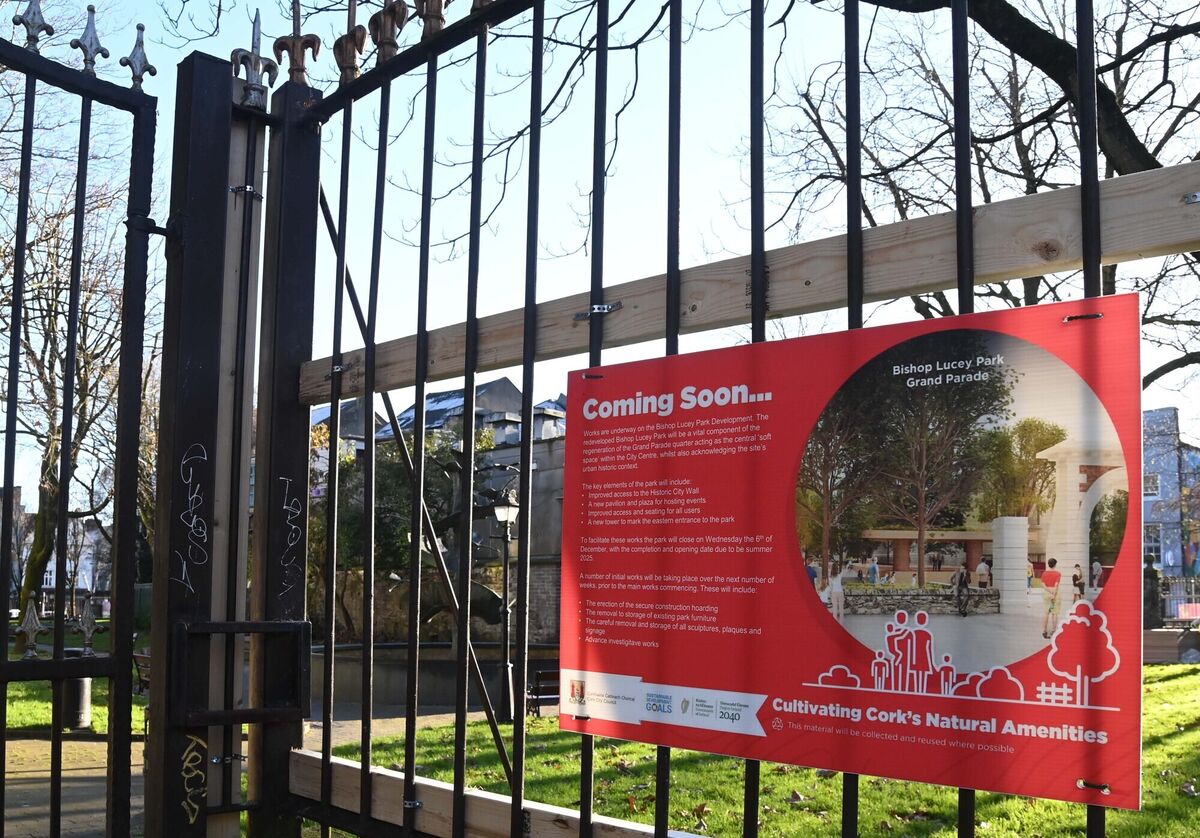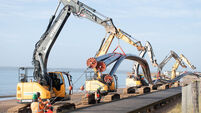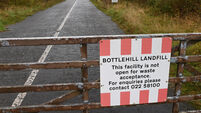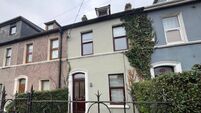Here's why green space matters in our cities

In recent times, there have been noticeable advances in access to green spaces in our urban centres. Picture: Denis Minihane
We need to rethink our relationship with nature in our cities.
The ecologist and writer EO Wilson used the term ‘biophilia’ to describe the human urge to associate with other forms of life. “The more we know about other forms of life” argued Wilson, “the more we enjoy and respect ourselves”.
“Humanity is exalted,” Wilson said, “not because we are as far above other living creatures, but because knowing them well elevates the very concept of life”.

Biophilia then, can be used to explain why cities and towns with nature and green spaces at their heart can be such positive, life-giving places. Pocket parks, regional parks, street trees, window boxes, allotments, green walls, potted plants, hanging baskets, riverbanks and more. It really doesn’t matter what form that nature takes. We need more of it. Urgently.
CLIMATE & SUSTAINABILITY HUB
In recent times, there have been noticeable advances in access to green spaces in our urban centres. In Cork, Tramore Valley Park—now with improved pedestrian and cycle access—is a major public park, not far from the city centre.
When you consider its previous use, as the city dump, its development over the last two decades is a notable long-term investment by Cork City Council. So too is the ongoing work on the Marina Park development. It is good to see major investment in public green spaces.
In Dublin, the opening this year of the new Bridgefoot Street Park in the Liberties shows what can be done to take a derelict site and create a genuinely interesting and useful green public amenity. Dublin City Council deserve huge credit for this and it’s an indication of what is possible on a derelict, inner-city site. (Owners of the old tax office site in Cork, please take note).

Despite some genuinely positive developments, we continue to see the erosion of green infrastructure in other parts of our cities.
In Cork city centre, the transfer of ownership of a portion of Bishop Lucey Park to the Freemasons continues to grate with people. To sell off for €1, a chunk of public green space to a private members club reflects poorly on everyone involved. Despite attempts to justify the sale, it detracts from the genuinely good work being done elsewhere.
With Bishop Lucey Park now behind hoardings, we wait to see what will emerge in 12 months. Based on the plans already publicly available, we will undoubtedly be faced with having spent millions of euro reducing the amount of green space in a city centre park. We will get a city square rather than a city park and I suspect lots of people will be happy with that.
The truth is many people seem to have forgotten the true value of trees, plants and nature within our cities. Unfortunately, many of those who have forgotten are also tasked with planning and managing our cities.
There is ample scientific research to confirm the positive benefits of urban green spaces. City dwellers who live close to such spaces have a longer life expectancy. Increased access to high-quality green spaces is also linked to better mental well-being.

This realisation has encouraged the city of Barcelona, for example, to invest millions in creating new ‘green axes’ to replace busy vehicle intersections. Road surfaces will be minimised and replaced with trees, plants, benches and other street furniture. Recent research suggests that the work in Barcelona will improve the health of up to 30,000 citizens and reduce health costs by as much as €45 million.
We also know that urban trees and other green infrastructure are good for business. Shoppers will spend up to 12% more for goods and services in streets with a decent tree canopy. Tourists want to visit and spend time in places where nature is considered important.
As Cop28, the UN climate change conference, continues in Dubai, the urgent need to reduce greenhouse gas emissions continues to dominate headlines.
While planting urban trees alone will never soak up enough carbon to solve climate change (we need to reduce emissions, full stop!), trees do offer a means of cooling our cities, reducing the effects of flooding and protecting biodiversity. There is also a role for trees and other planting in reducing air pollution (please don’t mention the Robot Trees!).
Protecting and improving our urban green spaces will help us to adapt to the climate changes that are already here.
With all of that in mind, the latest version of BusConnects in Cork is currently out for public consultation, with the deadline (Monday, December 18) fast approaching. While there is much to welcome in the plans, and the need for a functioning public bus system in Cork is self-evident, it’s disappointing not to see more care being taken in planning the routes for the sustainable transport corridors and replacing any trees impacted.

Along the Blackpool to City route, the publicly available plans suggest that 67% of all trees catalogued along the route will be removed with one tree being planted in the whole of Blackpool as part of the plans. The problem, of course, is that trees, pedestrians, and cyclists are vying for the scraps of land available once private motorcars are facilitated.
Is it really necessary to have five lanes of motor traffic on Leitrim Street—two minutes from Patrick Street—and is it so necessary that most of the trees on the street need to be lost in the process?
We need to rethink our relationship with nature in our cities and towns. Parks and trees are not a panacea for all of our problems. Nobody is suggesting that. However, there are clear benefits in investing in nature in urban areas. The future is green.
- Dr Eoin Lettice is a plant scientist at the School of Biological, Earth and Environmental Sciences at University College Cork.
















